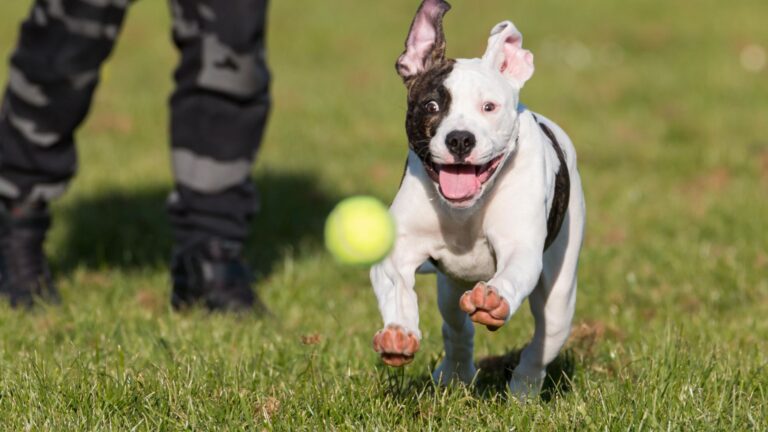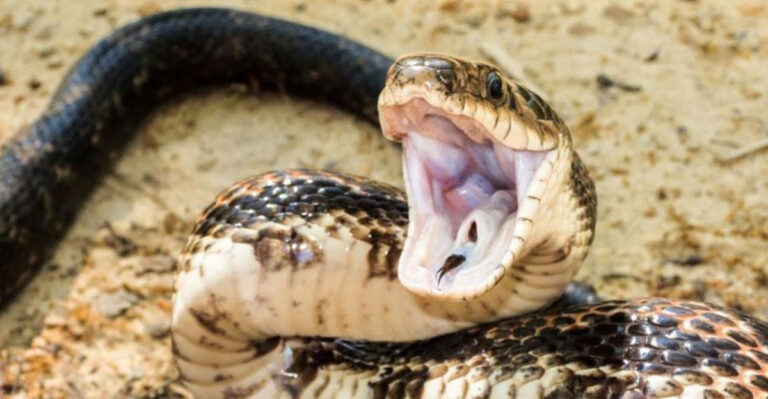14 Ways Your Cat Will Change During Their Teen Phase

Just like human teenagers, cats go through an adolescent phase that can be both fascinating and challenging.
Typically occurring between 6-18 months of age, this ‘teen phase’ brings noticeable changes to your feline friend’s behavior, appearance, and personality. Understanding these changes will help you navigate this developmental stage and maintain a strong bond with your growing kitty.
1. Midnight Zoomies Intensify

Those random bursts of energy your kitten displayed? They’re about to reach epic proportions. Teenage cats often develop a supernatural ability to sprint across your home at 3 AM, turning your peaceful bedroom into a feline racetrack.
This energy surge stems from their natural hunting instincts developing at full force. Don’t worry—this phase will eventually settle down.
2. Independence Day, Every Day

Remember your cuddly kitten who couldn’t bear to be apart from you? That adorable shadow might suddenly decide personal space is their new obsession. Teenage cats often crave independence as they explore their growing confidence.
They’ll seek higher perches and hidden spots to observe their kingdom from afar. This doesn’t mean they love you less—they’re just figuring out who they are.
3. Boundary-Testing Becomes An Art Form
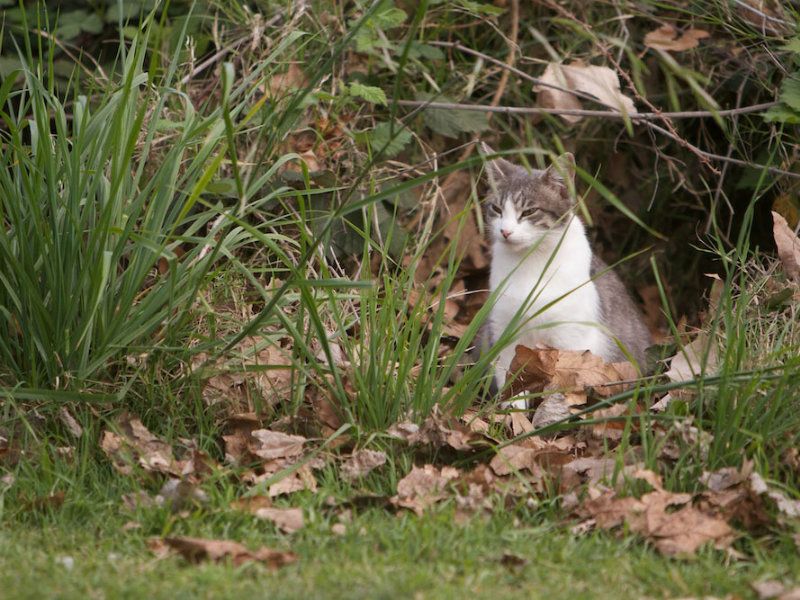
Your once-compliant kitten transforms into a master negotiator, constantly testing the rules you’ve established. Countertops previously off-limits become irresistible destinations. The curtains? Perfect climbing equipment!
This isn’t rebellion for its own sake—it’s your cat developing their understanding of their environment. Consistent reinforcement of boundaries now will pay dividends in their adult behavior later.
4. Voice Changes Surprise Everyone
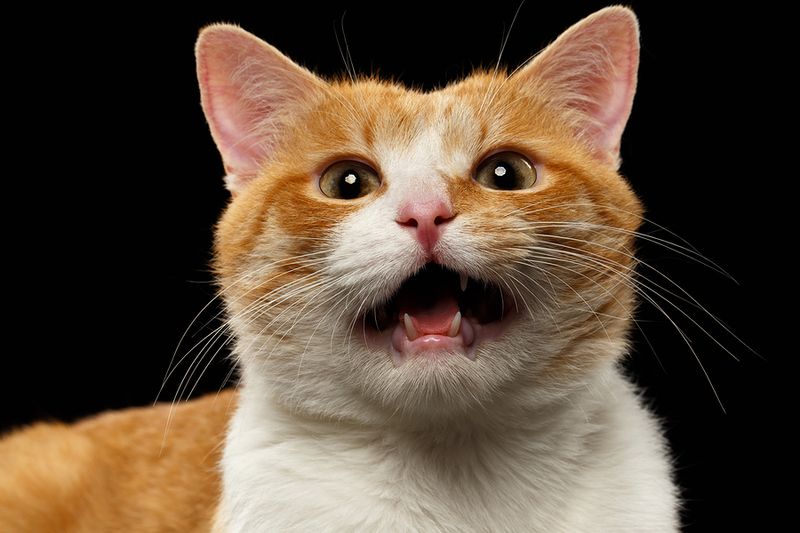
That sweet kitten meow gradually transforms into their adult vocalization. Some cats develop deeper, more assertive voices, while others find their distinctive chirps and trills.
You might hear entirely new sounds as they experiment with communication. This vocal evolution reflects their developing personality and confidence. Pay attention to these new sounds—they’re learning which ones get the best response from you!
5. Grooming Habits Take Center Stage
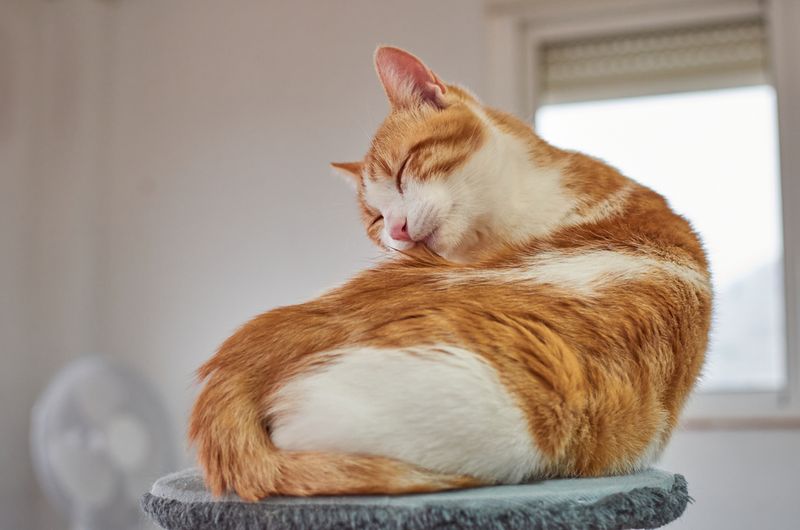
Suddenly your cat becomes obsessed with personal hygiene. Extended grooming sessions become a priority, sometimes lasting for what feels like hours. This increased attention to cleanliness coincides with their coat developing its adult texture and pattern.
You might notice them getting annoyed if interrupted during these important beauty routines. This self-maintenance signals their maturing sense of independence and self-care.
6. Play Styles Evolve Dramatically
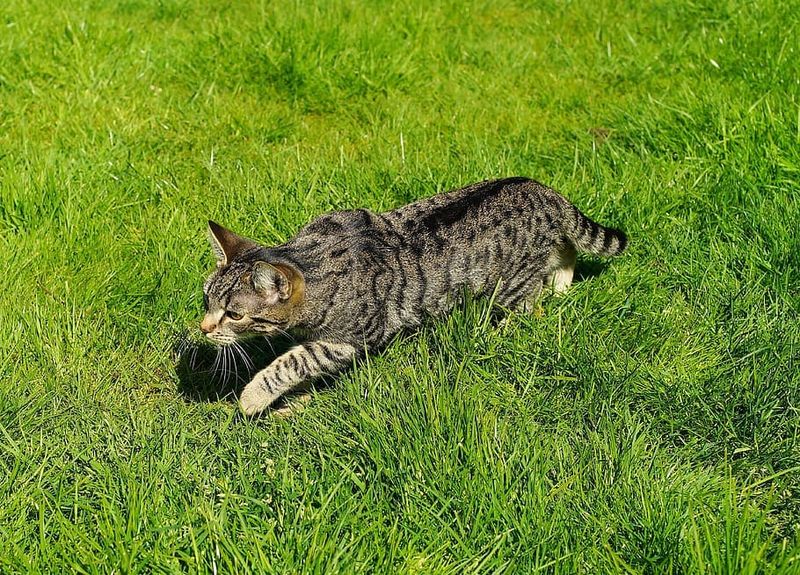
Kitten play often lacks finesse—all enthusiasm, little strategy. As your cat enters adolescence, their play becomes more sophisticated and calculated. You’ll witness impressive displays of stalking, pouncing, and ambushing that reveal their developing hunting skills.
Interactive toys that challenge their intelligence now hold greater appeal than simple batting toys. Their play evolves from random energy bursts to purposeful practice of adult skills.
7. Sleep Patterns Flip Completely
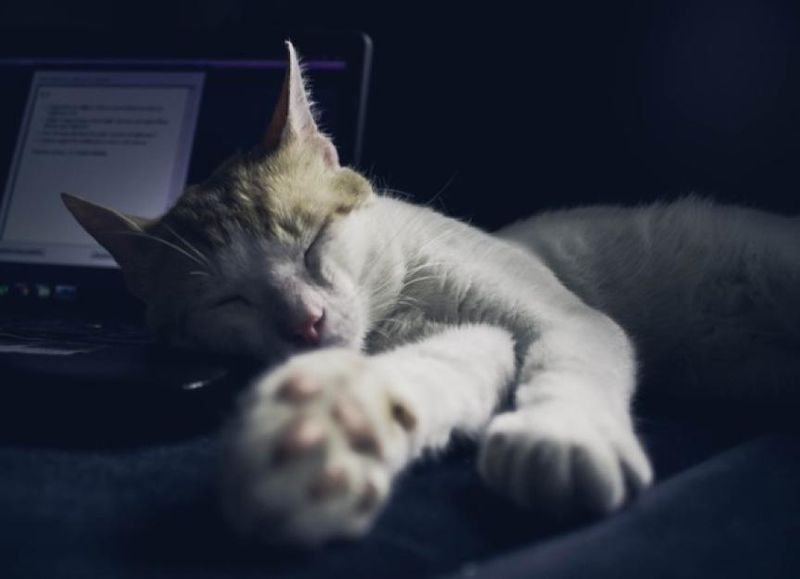
Your formerly predictable kitten might suddenly adopt a bizarre sleep schedule. Days become naptime, while nights transform into adventure hours. This shift reflects their wild ancestors’ nocturnal hunting patterns emerging in adolescence.
You might find them sprawled dramatically in sunbeams during day, storing energy for nighttime explorations. This temporary phase can be managed with evening play sessions to burn excess energy before your bedtime.
8. Territorial Instincts Emerge
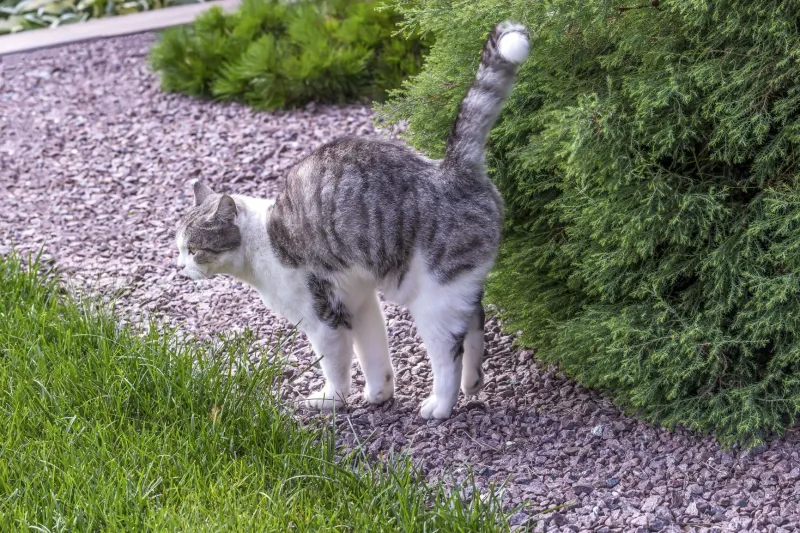
Almost overnight, your teen cat develops strong opinions about their territory. Favorite spots become fiercely guarded kingdoms, complete with specific scent-marking behaviors. Multi-cat households might experience temporary friendship renegotiations as boundaries get redrawn.
This territorial development is completely normal—they’re establishing their place in the world. Providing multiple resources (beds, perches, litter boxes) helps everyone navigate this transition smoothly.
9. Food Preferences Become Unpredictable
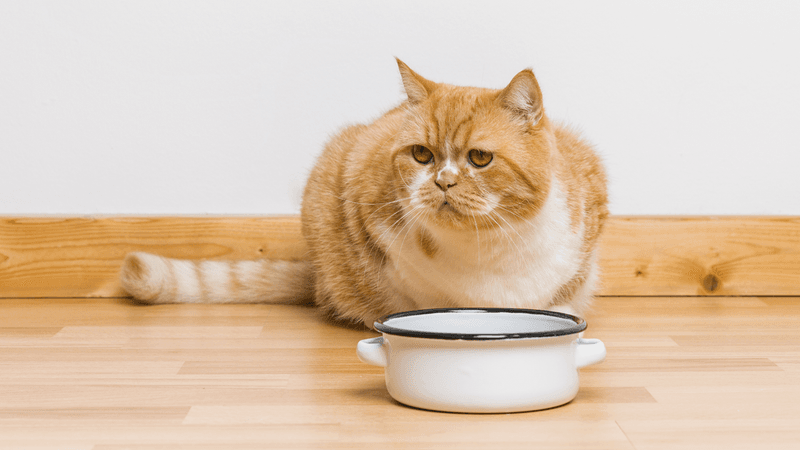
Yesterday’s favorite food might suddenly face complete rejection. Teenage cats often develop surprisingly specific preferences about their meals—texture, temperature, even the bowl they eat from can become crucial factors.
This pickiness stems partly from their developing sensory perception and partly from their growing independence. Don’t panic about occasional food strikes, but do consult your vet if food refusal persists for multiple days.
10. Physical Appearance Transforms

That cute kitten roundness gives way to longer limbs and a more athletic build. Coat colors might intensify or change slightly as adult fur replaces kitten fluff. Some breeds experience dramatic transformations—like Maine Coons developing their magnificent ruffs.
Eye color often settles into its permanent shade during this phase too. These physical changes happen gradually but looking back at kitten photos will reveal just how much they’ve grown.
11. Social Confidence Fluctuates Wildly
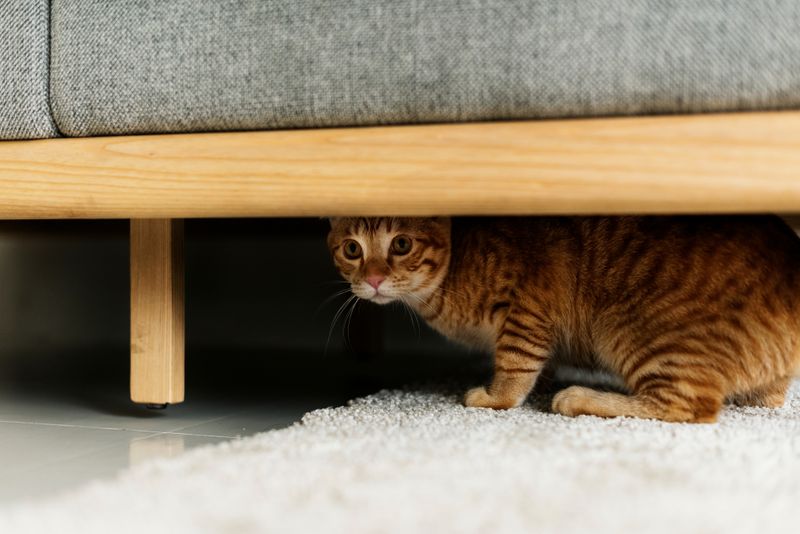
One day your cat fearlessly greets visitors, the next they hide under the bed at the slightest noise. This emotional rollercoaster resembles human teenage mood swings and stems from developing social confidence.
Your formerly brave kitten might suddenly develop new fears, or your shy baby might become surprisingly bold. Patience is key—provide safe spaces and positive experiences without forcing interactions. Their adult personality gradually emerges through these fluctuations.
12. Hunting Skills Sharpen Noticeably
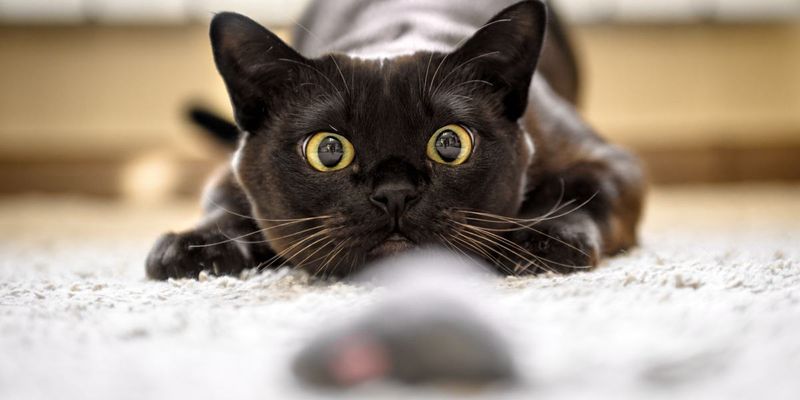
Even indoor cats experience a hunting skill upgrade during adolescence. Toy mice are stalked with newfound precision. Feather wands face tactical assaults worthy of a wildlife documentary. This skill refinement happens whether or not they’ve ever seen actual prey.
You might receive more “gifts” of conquered toys or household items. These displays aren’t random—they’re important practice for survival skills hardwired into their DNA, regardless of their cushy domestic lifestyle.
13. Cuddle Preferences Undergo Renovation
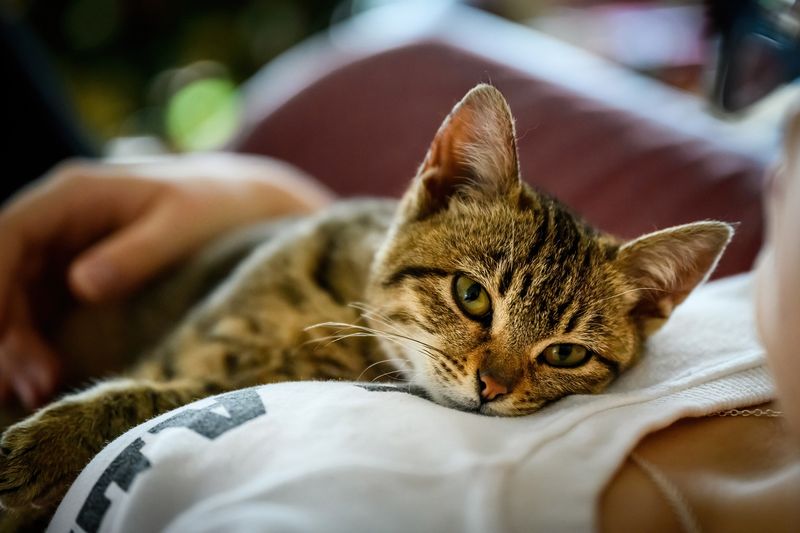
Your formerly lap-loving kitten might decide cuddling happens strictly on their terms now. Many teenage cats develop specific preferences about how and when affection happens—perhaps only at certain times of day or in particular spots.
This doesn’t signal reduced affection; they’re simply asserting independence. Many cats return to more consistent cuddling after this phase passes. Meanwhile, respect their boundaries while offering gentle invitations for connection.
14. Scratching Locations Multiply
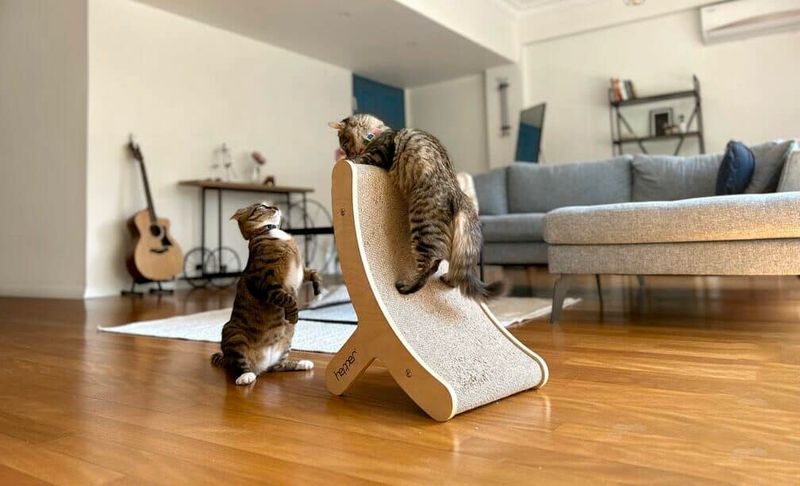
Your carefully positioned scratching post might suddenly lose its appeal as your teenage cat discovers the acoustic and textural wonders of your couch. This exploration of scratching surfaces coincides with their growing strength and territorial instincts.
They’re not being deliberately destructive—scratching serves multiple purposes including scent marking and stretching. Strategic placement of attractive alternatives and consistent redirection can help protect your furniture during this experimental phase.

